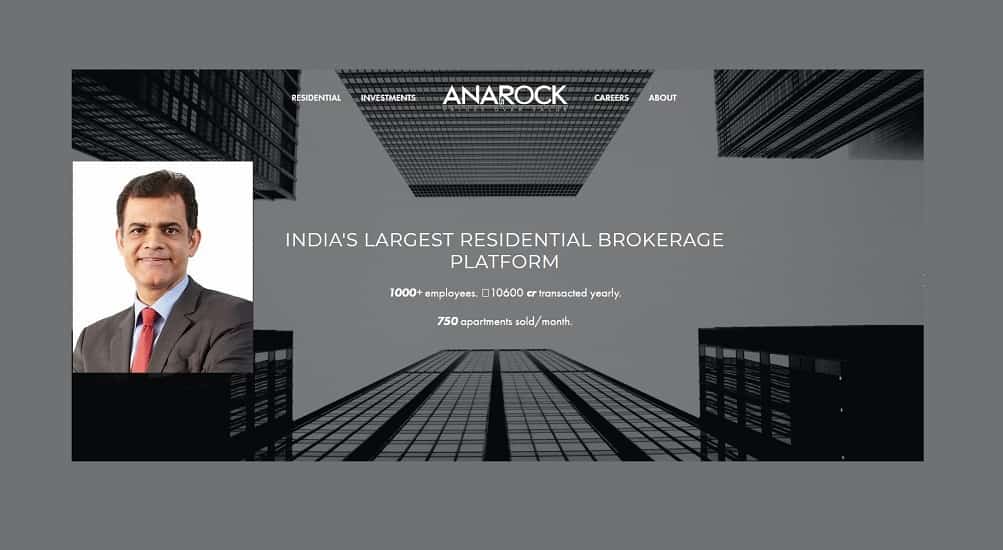

India, 19th February 2018/Anuj Puri – Chairman – ANAROCK//– Consolidation is the process of combining a number of separate parts into a single, more effective or coherent one. Whenever there is consolidation in any sector, the general perception is that everything is going down the drain. However, the reality is that this process usually happens at the fag end of an industry downturn and actually helps in catalyzing a much stronger come-back.
The real estate sector is a clear case in point. It is emerging from a prolonged slowdown coupled with landmark policy inputs which have begun to edge out the ‘small fry’ – essentially creating an environment of large-scale consolidation of tier II and III developers. This dynamic alone will define 2018 as a year of massive positive change for Indian real estate.
In 2017, the overall Indian economy and the real estate sector, in particular, were well and truly shaken up by a series of unprecedented reforms and structural changes. Without a doubt, demonetization, RERA and GST will go down in the annals of Indian real estate history as the ‘trishul’ that struck at the very heart of unregulated real estate players and practices.
Understandably, they resulted in panic among many of the smaller players. If we take just the case of RERA, it becomes evident why this was the case. RERA enforces financial discipline, transparency, accountability, customer centricity and compliance, and these were either completely alien concepts or at least completely avoidable philosophies for the smaller (and often dubious) developers active on the market then.
While DeMon blew the lid off the top of the cauldron of black money in the sector, only a handful of the players in the Indian real estate industry will be able to ride the tide in the post-RERA/GST Era – for the following reasons:
- Rising costs and complexity
RERA and GST necessitate a radical change in the methods of doing real estate business. There is a massive focus on compliance, documentation, processes, etc. which will increase the costs and complexity of business operations. In addition, developers will have to invest significantly in upgrading their billing systems, CRM, etc. as well as training their vendors, contractors and other stakeholders to ensure 100% compliance to RERA and GST norms.
There are, of course, smaller developers who while not necessarily national players are still very strong in their own local markets. However, most of the smaller players are fringe operators who do not have the financial muscle to update their systems and abide by all the new norms. Most of these players will either look at exiting the business altogether or tag along with large, organized developers.
- Liquidity crunch
Under the RERA regime, pre-launches have come to a complete halt. In addition, developers have to mandatorily park 70% of the funds received from buyers into any particular project in a separate escrow account, to be used only for construction expenses involving that particular project. The eradication of the entire mechanism of ‘rolling’ funds has utterly shaken up the hitherto existing status quo on the Indian real estate market.
Simultaneously, the crackdown on black money has closed all illegal means of raising funds, even as PE players interested in Indian housing plays are now doing extremely scrupulous due diligence and investing only in ‘clean’ projects. It is a nigh-impossible market environment for the under-equipped player to raise fresh funds. Smaller developers, especially tier II and tier III developers, will face the brunt of these norms, resulting in a liquidity crisis which will necessitate their exit from the business.
- The existing burden of stalled projects
In the pre-RERA regime, there was no particular law to ensure that the developers complete projects as per commitments. They had more than sufficient scope for endlessly deferring completion by stating reasons such as approval delays, change in norms, etc. In reality, capital collected from their customers was ‘rolled’ to purchase new land or construct other projects. As a result of such dubious processes and false promises, many homebuyers were duped and as per estimates, there are around 57,000 units in 170 stalled projects across the top 7 cities of India.
With the exceptionally strict compliance norms under RERA, the task of completing their stalled projects is going to be exceptionally daunting for many tier II and tier III developers who have very little inherent financial muscle. These projects will inevitably be sold on an ‘as-is’ basis to large developers and/or converted into other assets such as plotted developments. In any case, large-scale consolidation of assets is on the cards.
- Debt repayment pressure
With subdued real estate demand for the past few years, many developers have leveraged their balance sheets to an extent that has made it impossible for them to manage their debt repayment schedules. With some developers already declaring bankruptcy, banks and FIs are also keeping a close watch on the repayments and are completely unwilling to take any adventurous risks. With massive pressure to repay their existing debt, many tier II and tier III developers are likely to declare bankruptcy in the near future – again, pushing the cause of large-scale consolidation.
To summarize…
Demonetization, RERA and GST will surely create a more robust market environment, but the short-term pain is symptomatic of a terminal condition for a very significant number of smaller players. The previous dynamics that defined the Indian real estate industry – opacity, financial indiscipline, inadequate redressal mechanism and false commitments – are not the only things that are on their way out. Massive consolidation, tantamount to a one-time clean-up before the sector embarks on a journey of healthier growth, is very much on the agenda over the next couple of years
ANAROCK: 2018 Real Estate Consolidation





